NEONATOLOGY ON THE WEB
The Nursling
Lecture 10
By Pierre Budin, Professor of Obstetrics, University of Paris; Director
of the Clinique Tarnier; Member of the Academy of Medicine, Paris, France. Authorized
translation by William J. Maloney, M.B., Ch. B., 1907.
Gentlemen,
In 1892 I was authorised to organise at the Charité the
first Consultation for Nurslings.
I wish to devote to-day's lecture to the consideration of these
consultations and their results, so that you may realise what is
being done to better the condition of infants during the difficulties
and dangers of their early days.
Every week mothers who have been delivered in this Clinique bring
their infants to the hospital to be examined and weighed. In a
special register all information regarding the children, such as
weight, teething, illness, &c., is recorded, and from these data
the infants' curves are plotted.
I do my utmost to encourage breast-feeding, and where a mother's
supply is not quite adequate for her infant's needs, I still utilise
all the milk she is capable of furnishing, sometimes with the happy
result of abundance developing out of insufficiency.
In cases where breast-feeding alone is manifestly impracticable, I
prescribe a variable quantity of sterilised milk, which the mother
obtains here every morning. Sometimes a mother has no milk at all,
and then we are obliged to feed her infant exclusively on sterilised
milk.
Each mother receives a pasteboard card, on which is written the
infant's number in the register, data of birth, weekly weight, mode
of feeding, and daily allowance of milk (see Appendix).
When necessary an infant is brought more than once a week.
Many mothers, though ignorant and poor, are eager to fulfil their
obligations to their children, and, instead of abandoning them to
their devices, is it not our duty to supervise, direct, and help them
to the best of our ability? As one of my pupils has aptly said,
"These Consultations are really schools for mothers, for in them not
only do we tend the child, but we also instruct the mother, giving
her directions for present and future guidance."
You must not infer that my task is always easy. Obedience is
scarcely the distinguishing feature of women of the poorer classes.
They are beset by the clamorous counsels of their well-meaning but
ignorant neighbours, and many a time have they rendered my labour
fruitless by supplementing the daily allowance I was giving to their
infants, according to the standard laid down by the infallible
busybody who lived next door. Now, I limit my Consultations to those
who leave my wards. They are already accustomed to be governed by my
advice, and are educated to the value of weighing their children from
daily observation of the process in hospital. If a nursling is ill,
its mother keeps me informed of its progress until the moment of its
return to the Consultation.
Of the Consultations for Nurslings which I created at the
Charité and at the Maternité, the former is now
directed by Dr. Maygrier, and the latter by Dr. Porak. That which I
installed here, at the Clinique Tarnier, in 1898, comprised on June
2, 1899, 79 infants.
|
48 were breast-fed
|
48
|
|
14, at first breast-fed, were then on mixed feeding, for
their mothers had an insufficient supply of milk
|
|
|
4 had been on mixed feeding from the first
|
|
|
9, who had been breast-fed or on mixed feeding, were
weaned, for we keep infants till the age of two years
|
|
|
This makes a total of 27 infants for whom had been
utilised all the milk their mothers were capable of
producing
|
27
|
|
4 had been on artificial feeding from the first
|
4
|
|
Total
|
79
|
Very rarely does it happen that infants are reared from the
beginning on artificial feeding, but these last four on their
discharge from hospital had been entrusted to wet-nurses, by whom
they were grossly neglected. Their mothers, finding them in a sorry
state, had brought them back to us. As these women no longer had any
milk, we had no option but to rear their infants on sterilised milk.
At the beginning of June 1899, as is shown on
Fig. 119 --
60 per cent. of the infants attending my Consultation
here were breast-fed.
34 per cent. were taking all the milk their mothers could yield.
6 per cent. were artificially fed.
Breast-feeding is our special aim. Those who feed their infants
exclusively at the breast are required to attend only once a
fortnight, if all is going well, while the others must present
themselves regularly every week.
When I first began, mothers who were suckling, seeing how well
their infants throve, ceased after a time to attend the Consultation.
Only those whose infants, being on mixed or artificial feeding, were
receiving sterilised milk, continued to patronise me for any length
of time. But, nowadays, mothers are beginning to appreciate the
benefits of medical supervision, and many who give their children
nothing but the breast now attend with unfailing regularity.
The cows' milk which we distribute is contained in small sterile
bottles. As in each there is enough for only one meal, overfeeding is
avoided. The contents of any bottle, once uncorked, must be used
immediately or discarded.
Each litre of milk we receive costs the public authorities 20 to
25 centimes. The expense of sterilisation and of distribution raises
its price almost to 35. Our daily output being from 18 to 20 litres,
we spend annually about 2500 francs [about one hundred pounds
sterling]. With this comparatively small sum I conduct a Consultation
numbering 79 infants.
What results have been obtained? What has been the general health
of the infants? How has their mortality been affected?
As regards general health, I have told you in last lecture that
our nurslings enjoyed complete immunity from rickets, infantile
scurvy, and the dyspepsia alleged to arise from the use of pure milk.
Since 1892 I have had two cases of eczema in nurslings; both were
exclusively breast-fed, and the eczema disappeared when the mothers
were properly dieted.
As regards mortality, in conjunction with Dr. Chavane, who has
always taken an active interest in this work, I have published
several series of results. Before discussing my figures let us first
see, for the sake of comparison, what is the general mortality among
nurslings.
The infantile mortality used to be terrible. At Reims the
death-rate among infants under one year was 56.31 per cent. in 1886,
and in a single district of Lille it reached the appalling figure of
89 per cent. in 1880. Since the introduction of the "Roussel Law" a
great diminution has happily taken place, but the death-rate among
nurslings is still considerable. Lédé made a minute and
precise investigation of the infantile mortality in Paris for 1885,
and found that it was 27.52 per cent. Out of 13,830 infants born,
only 10,161 survived, nearly 3700 died.
Bertillon found the death-rate for the four years 1886 to 1890 to
be 21 per cent. among infants dwelling in Paris, excluding those
under the care of wet-nurses.
In the rich central parts of the capital the number of deaths is
less than in the poor peripheral districts, so that, if the infantile
mortality was represented on a plan of Paris by shades which darkened
as the number of deaths increased, the city would be encircled by the
deepest mourning.
Infants sent from Paris to wet-nurses in the provinces must be
considered in two categories -- those who are bottle fed and those
who are breast-fed.
The nearer the province is to Paris, as a rule, the lower is the
mortality, for the nurses are under stricter supervision around the
capital than in other parts of the country. Yet in the adjacent
department of Seine-et-Oise the death-rate for the first category is
28.21 per cent., while in the more remote province of Pas-de-Calais
it is almost 40 per cent.
Among those breast-fed, or considered as such, the mortality is
14.54 in Seine-et-Oise, and 28.57 per cent. in Pas-de-Calais. But
these figures are not quite reliable, for many self-styled breast
wet-nurses, having no milk, practise artificial feeding, so the
mortality in the second category is increased at the expense of that
in the first.
In Paris there were 59,112 births and 7089 deaths under one year,
in 1898, which makes a mortality of 12 per cent. among infants who,
not having left the capital, were nearly all under their parents'
care.
From January 1, 1896, to November 14, 1897, the total mortality
among infants sent to the provinces was 47 per cent.; out of 32,544
infants 15,295 succumbed.
From 1892, when I instituted my first Consultation, till June
1899, counting only those infants who have been under my care for at
least one month, or at most two years, I have had altogether 435
nurslings.
238 were exclusively breast-fed, and 197 were on mixed or
artificial feeding.
Out of these 435, 32 have died, which makes a general mortality of
7.3 per cent. The following were the causes of death:--
|
Broncho-pneumonia (5 following measles, and 1 whooping
cough)
|
10
|
|
Pulmonary tuberculosis
|
1
|
|
Meningitis
|
7
|
|
Suppurating glands in the neck
|
1
|
|
Subacute peritonitis
|
1
|
|
Diphtheria
|
1
|
|
Congenital syphilis
|
3
|
|
Small-pox (one of the haemorrhagic type)
|
2
|
|
Infantile cholera
|
1
|
|
Convulsions without further specification from the
practitioner in attendance: disease lasted only a few hours:
diagnosis uncertain
|
5
|
|
Total
|
32
|
The case of infantile cholera was that of an infant S___, No. 881.
He had several attacks of diarrhoea, and I discovered that the
mother, while she went to work, left him in a day nursery where he
was getting impure milk. In spite of my warning she placed him there
again on April 24, 1897. Diarrhoea began that night, and next day the
child was dead.
This had almost the value of an experiment, for it is the only
case of fatal diarrhoea I have had in my Consultations since I
started in 1892.
In the general infantile mortality there is a death-rate of
special interest to us, viz. that arising from gastro-enteritis. This
diseases rages especially during the height of summer, and affects
mainly bottle-fed babies, for, under the influence of the elevated
temperature, organisms develop rapidly and abundantly in cows' milk,
till it becomes little more than a toxic fluid.
In this curve (Fig. 120), due to
Malmejac, representing the mortality from diarrhoea in the Seine
Department during the year 1896, July is seen to be the most fatal
month.
During July 1898 diarrhoea caused 53 per cent. of all the deaths
among nurslings. Ten per cent. were fed at the breast, and 43 per
cent. from the bottle (see Appendix). During the intense heat which
prevailed in the summer of 1898, I contrasted the condition of
affairs in Paris with that at our Consultation. On
Fig. 121 I have represented the weekly
mortality from diarrhoea, during 1898, among infants under one year;
below is found the death-rate among breast-fed infants; above, that
among bottle-fed. The superposition of the two curves would give the
total mortality from diarrhoea which, in order to simplify the
figure, has not been indicated.
The mortality from August 7 to September 3 was frightful; in four
weeks 833 infants perished from diarrhoea. From August 14 to August
27, 550 of these deaths occurred, of which 493 were among bottle-fed
infants. On the curve this sudden increase in the death-rate recalls
the appearance of the Eiffel Tower.
What was happening here, at the Clinique Tarnier, during this
time? Dr. Chavanne made a careful abstract of all the nurslings who
followed the Consultation during June, July, August, and September
1898.
There were 53 infants then regularly attending. Of these 19 were
breast-fed and 34 bottle-fed. Digestive troubles arose in 12; in 9
the attacks were slight, in 3 they were serious. The morbidity from
alimentary causes was consequently 22 per cent.
As there were no deaths our mortality was zero.
Below the towering columns, which indicate the mortality from
diarrhoea among infants in Paris during these four months, is a
horizontal line, corresponding to zero, which represents the
death-rate at our Consultation. (For the year 1899 see Appendix).
Since I instituted the first Consultation for Nurslings in 1892
many others have been organised. That which Dr. Variot inaugurated at
his dispensary in 1893 has given excellent results, and rendered
inestimable service to the poor of Belleville. My former pupil, Dr.
Henri de Rothschild, in March 1896 founded a Consultation at his
dispensary; the same experiment has been made by Dr. Dubrisay, and
also, at the Hôpital Tenon, by Dr. Boissard, who was my
assistant at the Maternité.
On the initiative of M. Paul Strauss the General Council of the
Seine have organised Consultations at their dispensaries in Paris and
the neighbourhood.
Under the direction of my colleague, Dr. Napias, three others were
opened in March 1899, and I am convinced that his tireless energy and
boundless enthusiasm will tend greatly to further the movement.
Organisations for helping nursing mothers would materially add to
their utility by including Consultations in the scope of their work.
Each week a doctor could weigh and examine the infants, advise the
mothers, and distribute, when necessary, bottles of sterilised milk
of good quality. In this simple manner the great dangers of impure
milk, overfeeding, and premature weaning would be avoided. A great
stimulus, also, would be given to breast-feeding, for mothers, in
receipt of monetary aid, might receive the full grant only if their
breast sufficed to nourish the infant, and, if sterilised milk was
necessary, the cost might be deducted from the mother's subsidy. This
would prove a substantial encouragement for suckling, and would
ensure that at least part of the money expended would go to benefit
the child.
Some dispensaries give milk which they sterilise in small bottles;
while others distribute the sterilised milk of commerce. Dr. Variot
strongly recommends this. At his Consultation the majority of infants
are already weaned before they come under his care. To sterilise milk
in small bottles at his dispensary would be, he thinks, a complicated
and costly operation, and he considers it simpler and cheaper to
distribute it in large bottles. He guards against overfeeding by
giving to each mother a small, graduated vessel, on which is
indicated the maximum quantity of milk to be taken at any given age.
Variot and Marfan fear that milk sterilised in small bottles at
hospitals and dispensaries contains toxins injurious to infants. They
insist upon the importance of sterilising milk as soon as it is
drawn, and laud the commercial product, which, they believe, is
heated to 110° C. at once on its collection, as it should be,
but, unfortunately, as it rarely is.
At the beginning I had the same fears, but the milk I use at the
hospital is pasteurised to preserve it during transit, and is
sterilised upon arrival. I have never seen any manifestations of
these alleged toxins, and it is probably that, if ever formed, they
are, like most other toxins, destroyed by the subsequent
sterilisation at 100° C.
I continue, therefore, to use milk which I sterilise in the
hospital. It does not cost more than that commercially sterilised,
and I am certain of its age. The industrial product is not stamped
with the date of preparation, and is sometimes a very ancient fluid.
Each of our small bottles is immediately used; none are exposed to
the danger of contamination from repeated withdrawals of small
amounts; and as each contains enough for only one meal, there is
never any risk of overfeeding.
All through the provinces Consultations are being organised.
In 1893, the Municipality of Dieppe unanimously voted the sum of
2000 francs for the creation of a Consultation for Nurslings.
In July 1894 Dr. Berlioz obtained a grant from the local
authorities, for the distribution of sterilised milk during summer,
to the infants of the poor at Grenoble. The excellent results he had
obtained I communicated to the Academie de Medecine in 1897.
[1]
The pioneer in the provinces was Dr. Dufour of Fécamp. In
July 1894, without any knowledge of my work in Paris, he instituted a
Consultation for Nurslings under the happy and picturesque title of
"Goutte de Lait."
"The sphere of the 'Goutte de Lait,'" writes M.
Dufour, "is to give to mothers all possible advice and encouragement
in the suckling of their children.
"As often as the maternal supply is inadequate and demands an
artificial supplement we provide the requisite amount of milk, and
the infant is reared on mixed feeding.
"When it is proved to be a physical or social impossibility for a
mother to suckle, the Consultation takes the responsibility of
preparing the milk destined for the infant, so as to ensure its
quality and purity.
"All infants in the town of Fécamp are admitted to the
benefits of the Consultation. They are separated into three
categories: 1. A gratuitous section. 2. A partial-paying section. 3.
A paying section. The first comprises infants of the poorer classes;
the second, those of the artisan class; and the third, those of the
middle and upper classes. All, however, receive the same milk,
prepared and distributed in the same manner."
Dr. Dufour does not give undiluted cows' milk to infants. He
believes in modifying it so as to approximate the composition to that
of human milk. He dilutes it with one-third of its bulk of water, and
to each litre of this mixture adds 15 to 20 grams of fresh cream, 35
grams of lactose, and 1 gram of sodium chloride.
The milk thus modified is measured into small bottles, each of
which contains the equivalent of one meal, and, after being
sterilised at 102° C. for three-quarters of an hour, it is ready
for distribution. Great care is taken to avoid overfeeding. He thus
expresses himself with regard to his results:--
"Further, from the rigour with which they are dieted
these infants derive an increased resistance to disease. I can verify
Dr. Budin's assertions on this point from my own experience. My
little clients, whether breast or bottle-fed, never being gorged with
food, have neither eczema nor
tumid abdomens; these are
things unknown at the dispensary of the 'Goutte de Lait.'
"Although employing 'humanised' milk I never have a single case of
rickets, and yet I rarely give quantities greater than 1200 grams per
day.
"As the milk is heated for three-quarters of an hour to between
100° and 102° C., all possibility of tuberculosis is
excluded.
"Our milk, freshly drawn, 'humanised,' and sterilised at the
dispensary, is consumed within twenty-four hours, and although I have
now been conducting this work for five years I have yet to see my
first case of infantile scurvy."
Dufour's statistics are extremely interesting, for he has been
able to compare the figures obtained at his dispensary with those
from the town of Fécamp. The following table is a synopsis of
his results.
|
Years
|
The "Goutte de Lait"
|
Town of Fécamp
|
|
Number of Infants
|
Mortality from Diarrhoea (per cent.)
|
Number of Births
|
Mortality from Diarrhoea (per cent.)
|
|
1894-1895
|
33
|
0
|
400
|
6.80
|
|
1895-1896
|
73
|
6.80
|
429
|
18.18
|
|
1896-1897
|
68
|
3.97
|
420
|
9.51
|
|
1897-1898
|
125
|
2.26
|
455
|
12.00
|
|
1898-1899
|
156
|
1.28
|
434
|
9.67
|
The mortality from gastro-enteritis has been steadily diminishing
at the Consultation since 1895. The year 1894-95 can scarcely be
taken into account, for the Consultation was not begun till July,
and, as very few of the 33 infants were members during the deadly
summer months, the death-rate of zero has but little significance.
The difference between the mortality from diarrhoea in the town
and in the Consultation is made more evident by the accompanying
tracing (Fig. 112).
The increasing popularity of the Consultation is also noteworthy.
The attendance rose from 33 in 1894 to 156 in 1898. Out of 434 born
in Fécamp from July 1, 1898 to July 1, 1899, 156, that is more
than one-third, became members of the Consultation, and of these a
certain number belonged to the paying section.
In order to emphasise the results he obtained during the fatal
summer of 1898, Dufour collected statistics from the principle towns
of Seine Inferieure. He noted the number of deaths under one year
from diarrhoea during the month of August, and contrasting this with
the number of births, showed the loss sustained by society:--
|
Town
|
Mortality from Diarrhoea
|
|
Rouen
|
76.6 per cent.
|
|
Bolbec
|
66.0 per cent.
|
|
Havre
|
51.2 per cent.
|
|
Fécamp
|
16.0 per cent.
|
At the "Goutte de Lait," although the mortality from diarrhoea was
calculated not for infants from zero to one year, but from zero to
two years, and not for the month of August alone, but for the three
months, July, August, and September, it was yet only 2.8 per cent
(Fig. 123). The eloquence of results
such as these, gentlemen, raises Dr. Dufour's work above criticism.
Many towns in France and other countries now have Consultations
for Nurslings; their number is rapidly increasing, and the movement
is taking a comprehensive grasp of the leading civilised communities.
In many Consultations, unfortunately, artificial feeding is the
rule. In some dispensaries in Paris it is almost exclusively
practised, for mothers bring their infants only after they have
weaned them. Personally, I am much more favourably situated. The
authorities limit my Consultation to infants born in the Clinique.
Every woman I deliver must suckle while in hospital. On a chart at
the head of her bed she notes with interest the curve, which
represents from day to day the progress of her infant's weight. When
she leaves the Clinique she is usually both willing and able to
nurse. We do our utmost to encourage her to perservere, and we find,
from year to year, that maternal feeding is steadily increasing among
our patients. To utilise all the milk a mother can furnish, to advise
her in rearing her child, to help her with sterilised milk when her
mammary secretion does not suffice for her infant's needs, are our
aims in instituting Consultations for Nurslings, and a little
patience and perserverance will realise their fulfilment.
The use of sterilised milk and the careful supervision of infant
feeding has greatly enhanced the value of crèches.
Dr. Drapier, who conducts a large crèche at Réthel,
consulted me regarding the feeding of his little charges. In his
published results he writes:--
"In 1893 the death-rate from infantile cholera was 13
per cent. I was then using ordinary milk.
"In 1894 I adopted the recommendations of Dr. Budin, and it at
once fell to 5 per cent.
"In 1895 it was further reduced to 3 per cent."
If an abstract of the returns for June, July, August, and
September of the fatal year 1898 be made for the four crèches
in Paris in which sterilised milk is used, under proper supervision,
the following table is obtained:--
|
Crèche
|
Under the Care of
|
Total of Infants
|
Simple Enteritis
|
Choleraic Diarrhoea
|
Deaths
|
|
Furtado Heine
|
Dr. Laborde
|
140
|
32
|
1
|
0
|
|
Rue Gauthey
|
Dr. Gauchas
|
24
|
4
|
0
|
0
|
|
Sainte Philomène
|
Dr. Belluze
|
74
|
2
|
0
|
0
|
|
Fènelon, Charles
|
Dr. Bouquet
|
44
|
0
|
2
|
0
|
|
Total
|
282
|
38
|
3
|
0
|
For the 282 infants observed in these four crèches, the
total morbidity was 14.5 per cent., and that from choleric diarrhoea
was 1 per cent.
The mortality was zero.
Compare this with the appalling death-rate in Paris during the
same period (Fig. 121).
In a lecture which I was asked to give to the Artisan Congress on
April 22, 1892, I said:
"During the last few years I have been privileged to
assist in what has been little short of a revolution. Formerly a
deadly affection, puerperal fever, terrorised our maternities.
To-day, thanks to the progress which has followed the footsteps of
Pasteur, women are delivered in safety. In properly conducted
maternity hospitals death has now no place, and the results obtained
are better in these institutions than at the bedsides of the rich.
"Let us hope that we are on the verge of a similar revolution in
the interests of the infant. Recent work, again the outcome of
Pasteur's labour, has shown that by means of sterilisation of milk, a
process which each can carry out in his own home, a considerable
reduction in the appalling infantile mortality is not only possible
but practicable. By its use every one, poor and rich, can safeguard
their little ones, and taste the sweet joys of family life without
the heartrending sorrows. Your country has need of all her children,
and humanity demands that we should spare no effort on their behalf."
Gentlemen, Consultations for Nurslings and "Gouttes de Lait" are
the instruments from which I look to see the realisation of these
hopes of mine. By giving counsel to mothers in the rearing of their
children, and by the use of sterilised milk under proper supervision,
this revolution may be accomplished. If you are convinced of the
value of the principles I advocate -- and you can hardly be otherwise
in the presence of the curves I have shown you, and of the weekly
demonstrations you have had of the results obtained at the
Consultation here -- you will not, I think, remain indifferent. When
you see nurslings dying around you, and feel powerless to save them
-- who knows? perhaps among them may be those very near and dear to
you -- you will then be roused to action, you will become disciples
of the principles I preach, and you will protect your little charges
from the terrible scourge of diarrhoea.
Then, why wait? Be guided by one who has already been chastened by
this sad experience. Begin with your first cases. Counsel and
encourage breast-feeding with all your strength, carefully supervise
and direct mixed and artificial feedings, and use sterilised milk.
Whether your lot be placed in town or village, organise
Consultations for Nurslings.
Strive always to fulfil your function as medical men, that
glorious function which consists in consecrating your intelligence
and your strength to saving the lives of your fellow-beings.
Footnotes
[1] Bulletin de l'Academie de Medecine,
Paris, 1897.
|
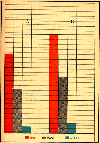
|
Fig. 119. Consultation for Nurslings at Clinique Tarnier.
A, Number of infants of the Consultation in 1899 who were
reared on breast, mixed, and artificial feeding
respectively. B, Percentage proportion of infants on these
modes of feeding.
|
|
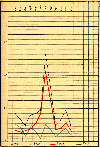
|
Fig. 120. Monthly mortality from diarrhoea among infants
breast-fed and bottle-fed during the year 1896
(Malméjac).
|
|
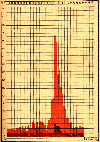
|
Fig. 121. Death rate from diarrhoea among infants under
one year of age in Paris during the year 1898. Black =
breast-fed; red = bottle-fed. The horizontal line at zero
shows that the mortality was nil at the Consultation in
1898.
|
|
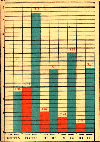
|
Fig. 122. Mortality from enteritis in the town of
Fècamp and at the "Goutte de Lait" (Dufour). The blue
columns indicate the mortality in Fècamp, the red the
mortality at the "Goutte de Lait."
|
|
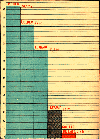
|
Fig. 123. Mortality from enteritis among infants under
one year of age in the principal towns of Normandy and at
the "Goutte de Lait" during August 1898 (Dufour).
|
Return to The Nursling Contents Page
Created 2/22/97 / Last modified 2/22/97
Copyright © 1998 Neonatology on the Web / duncan@cerf.net




